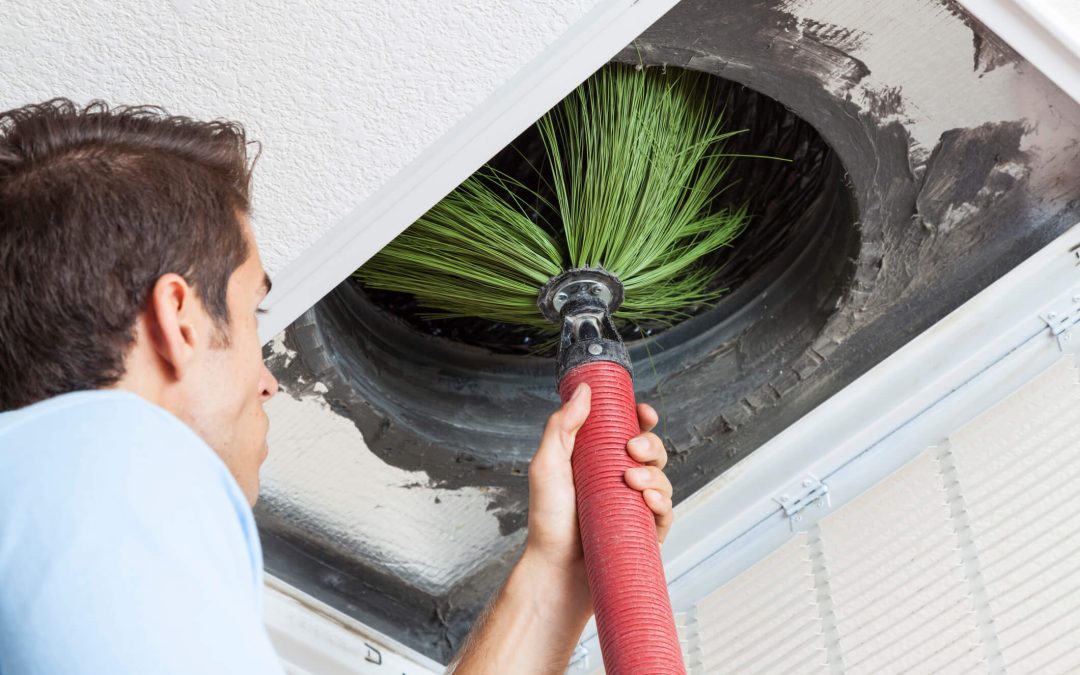Duct cleaning is an important maintenance task for homeowners who want to ensure that their heating and cooling systems are running efficiently and effectively. Duct cleaning involves removing dirt, dust, and debris from the HVAC system’s ducts to improve indoor air quality and reduce the risk of health problems. In this article, we will discuss the benefits of duct cleaning and the process involved.
Why is Duct Cleaning Important?
Over time, dust, dirt, and other contaminants can accumulate in your home’s ductwork. These contaminants can reduce the efficiency of your heating and cooling system and increase the risk of health problems. Dirty ducts can also cause unpleasant odors, mold growth, and even pest infestations.
The benefits of duct cleaning include:
- Improved Indoor Air Quality
Duct cleaning removes contaminants from your HVAC system’s ducts, which can improve the quality of the air in your home. This can be especially beneficial for people who suffer from allergies or respiratory problems.
- Increased Energy Efficiency
When your HVAC system’s ducts are clogged with dirt and debris, it has to work harder to heat or cool your home. This can lead to higher energy bills and increased wear and tear on your system.
- Reduced Risk of Health Problems
Duct cleaning can help reduce the risk of health problems associated with poor indoor air quality, such as respiratory infections, allergies, and asthma.
The Duct Cleaning Process
Duct cleaning is a complex process that requires specialized equipment and expertise. Here is a step-by-step guide to the duct cleaning process:
Step 1: Assessment
Before starting the cleaning process, the technician will perform an assessment of your HVAC system to determine the extent of the cleaning required. This may involve inspecting the ducts and checking for any signs of damage or blockages.
Step 2: Preparation
The technician will then prepare your home for the cleaning process by covering your floors and furniture to protect them from dust and debris.
Step 3: Cleaning
The technician will use a specialized vacuum system to remove dirt, dust, and debris from your ducts. This system uses a combination of high-pressure air and a powerful vacuum to loosen and remove contaminants from your HVAC system’s ductwork.
Step 4: Sanitization
Once the ducts have been clean, the technician may apply a sanitizing solution to kill any remaining bacteria or mold spores.
Step 5: Inspection
After the cleaning process is complete, the technician will inspect the ducts to ensure that they are clean and free of debris. They may also check for any damage or leaks in the ductwork.
How Often Should You Clean Your Ducts?
The frequency of duct cleaning will depend on several factors, including the age of your HVAC system, the quality of your indoor air, and the number of people living in your home. The National Air Duct Cleaners Association (NADCA) recommends having your ducts clean every 3 to 5 years.
However, if you have pets, smoke indoors, or have recently completed a renovation project. You may need to have your ducts cleaned more frequently. It is also a good idea to have your ducts cleaned if you notice an increase in dust or debris in your home or if you experience any respiratory symptoms.
Conclusion
Duct cleaning is an important maintenance task. That can help improve the efficiency of your HVAC system and the quality of the air in your home. While the process can be complex, it is important to hire a professional duct cleaning service to ensure. That the job is done properly. By having your ducts clean regularly, you can reduce the risk of health problems and improve the comfort level in your home.

